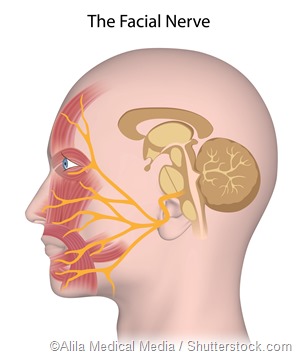 Paralysis of the facial nerve may arise due to infection, inflammation, surgery, trauma, and tumors. Damage to this nerve, which is the seventh cranial nerve, may be uni- or bilateral. It results in facial muscle weakness and/or drooping of the face.
Paralysis of the facial nerve may arise due to infection, inflammation, surgery, trauma, and tumors. Damage to this nerve, which is the seventh cranial nerve, may be uni- or bilateral. It results in facial muscle weakness and/or drooping of the face.
This is a very unfavorable condition to have, whether temporary or permanent, as the face and its expressions play pivotal roles in the revelation of personality and character. For example, smiling, which is usually an amicable expression, may be twisted with facial nerve paralysis and inadvertently portray a cynical expression to someone unaware of the patient’s condition.
Treatment
Managing facial nerve paralysis is fairly complex and may involve pharmacotherapy in addition to surgery. Additional treatment approaches for facial nerve paralysis may include the use of static and dynamic techniques to reanimate the face, as well as physiotherapy for retraining the neuromuscular functioning of the face.
Decompression is required when the facial nerve is compressed anywhere along its path through the skull. Decompressing the facial nerve may be achieved through one of three approaches or a combination, where applicable. These include the transmastoid, middle fossa, and translabyrinthine approaches.
Facial Nerve Anatomy | The Facial Paralysis Institute
Transmastoid facial nerve decompression
If damage to the facial nerve is localized near the mastoid or tympanic segments of the nerve, the transmastoid approach may be used. This decompression technique is done over 180 degrees of the nerve’s circumference.
Critical surgical landmarks for this procedure include the digastric ridge, which is a ridge of the bone that is posterior to the facial nerve and medial to the tip of the mastoid. Additional landmarks will include the fossa incudis and the lateral semicircular canal. During the process, the incus may be replaced by an interposition graft, which allows for more extensive decompression of the nerve.
Middle fossa and translabyrinthine facial nerve decompression
Facial nerve injury extending to the labyrinthine segment of the nerve may require decompression through the middle fossa approach. In this approach, the semicircular canal, greater superficial petrosal nerve, as well as the vertical crest that separates the superior vestibular and facial nerves from each other, are all used as crucial surgical landmarks.
Middle fossa facial nerve decompression may be done alone or it may sometimes be combined with the transmastoid procedure. This combination is especially useful for facial nerve compression that is the result of to trauma to the temporal bone. Intratemporal facial nerve injury that arises along its entire course with consequential impairment or loss of cochlea-vestibular function may require a translabyrinthine decompression.
Complications
As with any surgical procedure, there are certain risks involved with the decompression of the facial nerve. These risks include, but are not limited to, post-operative conductive, sensory hearing loss, epidural bleeding, edema within the temporal lobe, and meningitis.
Uncontrolled bleeding is one of the most serious complications that can arise during this type of surgery. In addition, patients may suffer headaches and inadvertent injury to other cranial nerves.
References
Further Reading